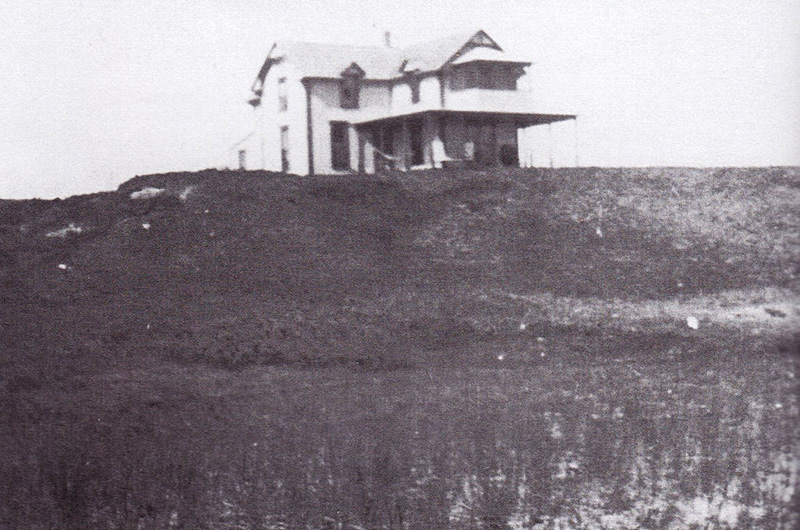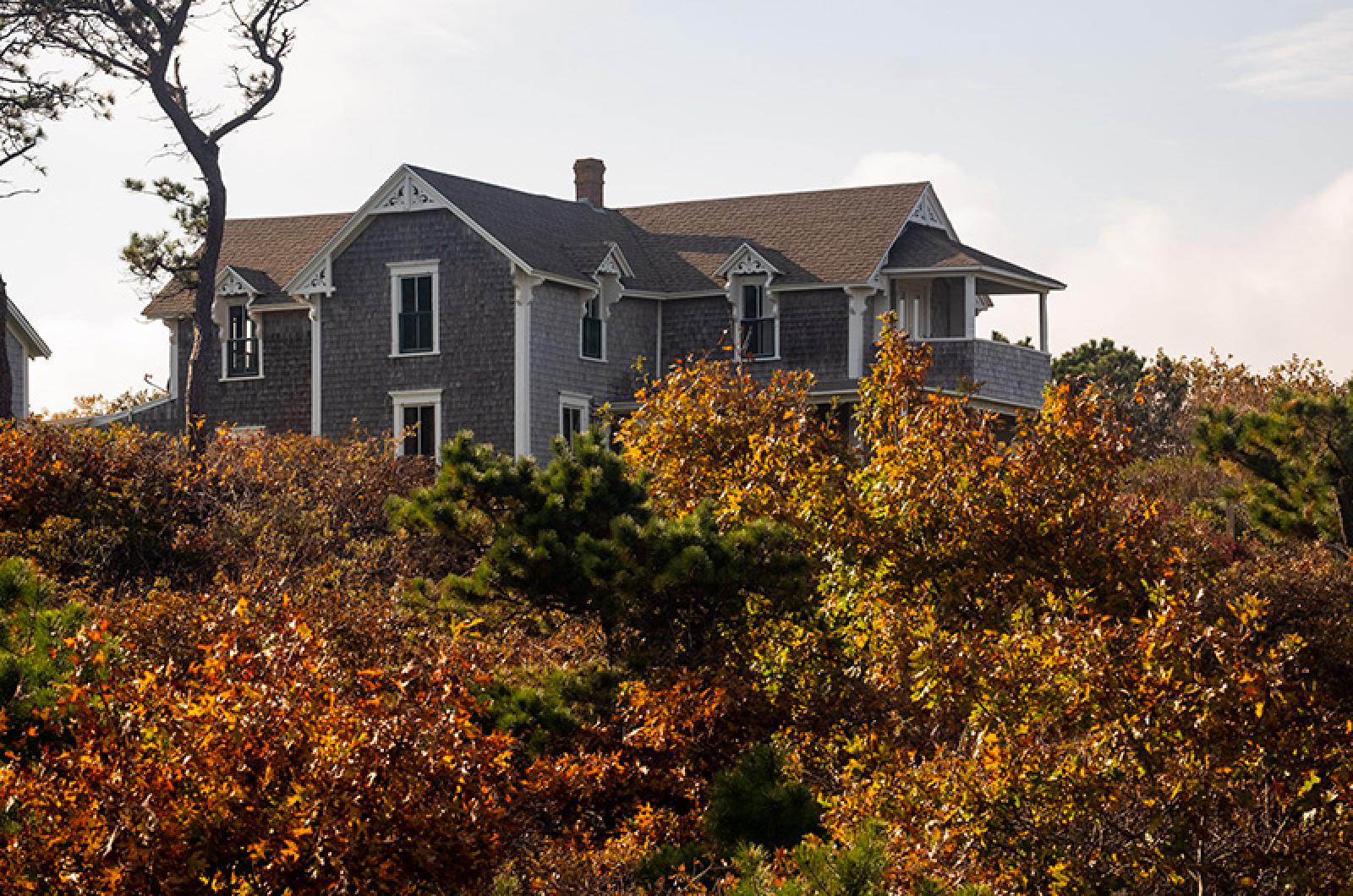A public hearing before the Martha’s Vineyard Commission on a plan to demolish a historic hilltop house on Chappaquiddick has been postponed at the request of the applicant.
The MVC was set to decide Thursday night whether the plan merits review as a development of regional impact (DRI).
The house which sits atop Menaca Hill has a rich history dating to 1885. Once part of the Mattakeeset Lodge in Katama, the house was moved to its current location just past the Chappaquiddick Point when Joshua Snow Smith purchased it in 1910. Over the next century, the Menaca Hill Inn served as seasonal watering hole and guest house for Chappaquiddick visitors, offering easy access to Edgartown and a panoramic, 200-degree vista of Edgartown, the outer harbor, Cape Cod and the Cape Pogue Lighthouse.
Two years ago, J. Allen and Katherine Smith bought the house from Joshua Snow Smith’s grandson, David Alger, for $2.8 million. The new owners intended to remodel the rambling old summer house into a year-round home, documents filed with the commission show. But after inspections from contractors and architects turned up extensive structural problems, the family has opted for demolition.

The building does not lie within the town historic district, but the Edgartown historic commission referred project to the MVC using a discretionary referral process.
A public hearing was scheduled for Thursday night to decide whether the commission will require require a full hearing and review.
But commission DRI coordinator Paul Foley confirmed Thursday that Phil Regan, a principal with Hutker Architects who works for the homeowners, wrote a letter to the commission earlier in the week requesting the postponement.
“The Smiths can’t get to the Island until Friday, nor have we had enough time to vet some of the options we previously discussed,” Mr. Regan wrote. Among other things, he said the family expects to meet with board members for the Chappaquiddick Community Center and Chappaquiddick Beach Club to discuss potentially donating the house.
The demolition of any building more than 100 years old automatically goes to the regional land use commission for possible review.
The Menaca Hill house dates to 1885, but because the AYB (“Actual Year Built”) for the Menaca Hill house was incorrectly listed on the town assessors’ property record card as 1930, Mr. Foley suspected the buyers did not know the building was subject to mandatory review by the MVC.
“Somebody should have sent it as a concurrence review,” Mr. Foley said. “But it’s listed on the assessors card as 1930, so they thought they were in the clear.”
The history of the house is chronicled in a chapter by Sandford (Sandy) Berry in the book Chappaquiddick: That Sometimes Separated But Never Equalled Island.
The building was constructed in the late 19th century as guest house at the southern end of the Vineyard Railroad in Katama. When the railroad went belly up, Island entrepreneur Jimmy Chadwick bought the guest house, purchased almost half the land on Chappaquiddick Point, and moved the building piece by piece across the harbor, putting it together atop Menaca Hill like a jigsaw puzzle. As part of the reconstruction process, Mr. Chadwick added a kitchen pantry and shed, giving the house its characteristic cruciform shape.
By 1930, the Menaca Hill Inn had opened for business, offering guests, according to a promotional brochure, “large, airy rooms, each with a water view; roomy piazza; two sleeping porches, hot and cold running water; open fire; these combined with the tonic of out-to-sea air make it an ideal spot for a restful, healthful and interesting vacation.”
As the century progressed, the inn survived multiple storms, including a particularly vicious northeaster in 1936 and Hurricane Carol in 1954. According to Mr. Berry, the house’s stately defiance of nature added to its charm.
“After decades of climactic battering,” he wrote, “there isn’t a right angle in Menaca. The open second-floor hall sags under the bare feet from a hundred summers filled with family and guests . . . antiquity whispers, too ancient to shout.”
What Mr. Berry saw as charm, the Smith family contractors see as trouble.
In a letter to Mr. Regan at Hutker about the house, Steven P. Siegel, principal of Siegel’s Structural Engineers, wrote: “From a structural engineer’s point of view, considering the degraded brick and loosely stacked block and wood foundations, significantly undersized floor joists and roof rafters, building walls made of plank with almost no studs to resist vertical gravity and horizontal wind loads, shed rafters sliding off support ledgers, and areas of framing rot, Menaca is currently more hazard than house.”
Mr. Siegel concluded that the conditions render the building unsafe in high wind conditions, and complete reinforcing or reconstruction would be necessary to make the house habitable into the summer shoulder seasons.
During an inspection from Prior Environmental Services, lead paint was discovered on most of the home’s painted surfaces, including walls, ceilings, doors, casings, frames, windows, floors and stair treads.
In a letter to the commission a neighbor, Mary Adelstein, expressed concern about the demolition.
“It’s a pity to have it torn down,” she wrote. “Since this house was moved to this location might it not be possible to move it again and have it used either as a dwelling or some other purpose?”
Mr. Foley said a new date has not been set yet for the hearing.
So for now the home remains standing, a bulwark of memories affixed atop Chappaquiddick’s prow.







Comments (6)
Comments
Comment policy »